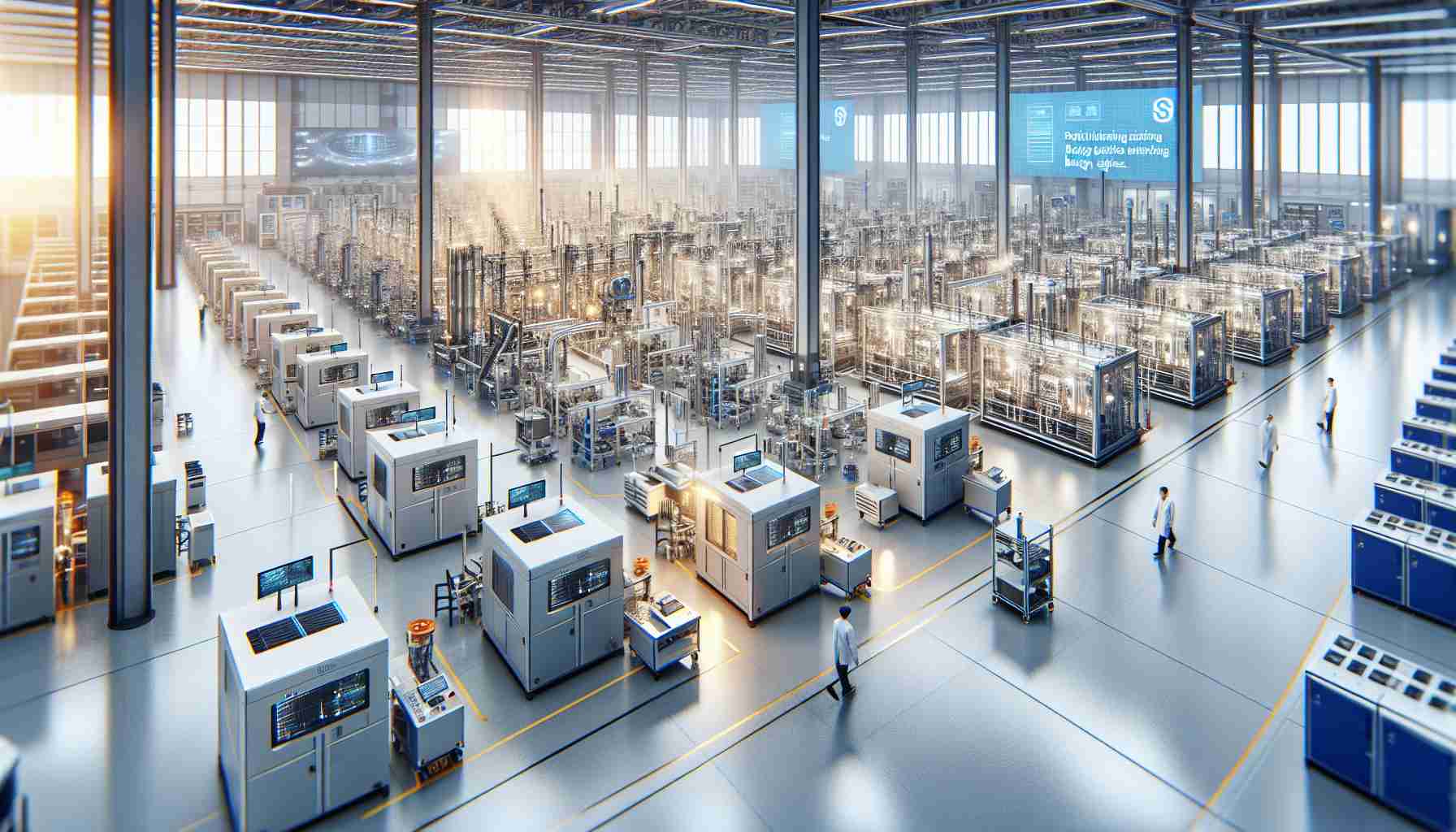JR Energy Solution (JR ES), a pioneering company in battery innovation, has opened Korea’s first electrode foundry with the capability to produce electrodes that incorporate Enevate’s cutting-edge technology. This marks a significant milestone in the development and manufacturing of high-performance lithium-ion battery electrodes.
Enevate’s revolutionary silicon battery technology offers exceptional advancements in battery performance. With the ability to charge up to 10 times faster than traditional lithium-ion batteries, it provides a distinct advantage in the rapidly evolving battery market. Moreover, this innovative technology boasts superior energy densities, enhanced safety features, and efficient operation in low-temperature environments, making it a versatile solution for various applications.
By collaborating with JR ES, Enevate seamlessly integrates its technology into existing manufacturing infrastructure, eliminating the need for costly new production equipment and processes. This compatibility not only streamlines the transition to advanced battery technology but also drives higher profitability for manufacturers.
Embracing a customer-centric approach, JR ES aims to address the diverse requirements of battery customers, including leading automotive OEMs. The company’s exceptional manufacturing quality and visionary outlook position it as a trusted partner for both startup and established cell manufacturers. JR ES’s electrode manufacturing plant, strategically located in the Yongsan Industrial Complex, Eumseong, Chungcheongbuk-do, demonstrates its commitment to advancing battery technology and sustainable energy solutions. The plant, constructed in just 8 months, showcases the team’s efficiency and expertise.
With an annual production capacity of 500MWh of anode and cathode electrodes, the facility is expected to significantly enhance battery performance and reliability. JR ES projects impressive electrode sales of $15 million by 2024, reflecting strong market demand.
Looking forward, JR ES plans to expand its operations with an additional electrode plant in 2025 to solidify its industry leadership. This future facility will have a capacity of 2GWh and further contribute to the advancements in battery technology.
JR Energy Solution’s electrode foundry represents a significant step towards revolutionizing battery electrode manufacturing in Korea. By combining Enevate’s breakthrough technology and JR ES’s commitment to delivering high-quality products, the future of battery innovation looks promising.
Frequently Asked Questions (FAQs) – JR Energy Solution (JR ES) and Enevate’s Electrode Foundry Opening
1. What is the significance of JR Energy Solution’s electrode foundry opening?
JR Energy Solution has opened Korea’s first electrode foundry, which has the capability to produce electrodes that incorporate Enevate’s cutting-edge technology. This marks a significant milestone in the development and manufacturing of high-performance lithium-ion battery electrodes.
2. What is Enevate’s silicon battery technology?
Enevate’s silicon battery technology offers exceptional advancements in battery performance. It has the ability to charge up to 10 times faster than traditional lithium-ion batteries, providing a distinct advantage in the rapidly evolving battery market. It also boasts superior energy densities, enhanced safety features, and efficient operation in low-temperature environments.
3. What advantages does Enevate’s technology provide?
Enevate’s technology offers advantages such as fast charging, high energy densities, enhanced safety features, and efficient operation in low-temperature environments. These characteristics make it a versatile solution for various applications.
4. How does JR Energy Solution collaborate with Enevate?
By collaborating with JR ES, Enevate seamlessly integrates its technology into existing manufacturing infrastructure, eliminating the need for costly new production equipment and processes. This compatibility streamlines the transition to advanced battery technology and drives higher profitability for manufacturers.
5. What approach does JR Energy Solution take?
JR ES embraces a customer-centric approach and aims to address the diverse requirements of battery customers, including leading automotive OEMs. They position themselves as a trusted partner for both startup and established cell manufacturers, offering exceptional manufacturing quality and a visionary outlook.
6. Where is JR Energy Solution’s electrode manufacturing plant located?
JR ES’s electrode manufacturing plant is strategically located in the Yongsan Industrial Complex, Eumseong, Chungcheongbuk-do, in Korea.
7. What is the production capacity of JR ES’s electrode manufacturing plant?
The facility has an annual production capacity of 500MWh of anode and cathode electrodes, which is expected to significantly enhance battery performance and reliability.
8. What are the projected electrode sales by 2024 for JR ES?
JR ES projects impressive electrode sales of $15 million by 2024, reflecting strong market demand.
9. What are JR ES’s future plans?
JR ES plans to expand its operations with an additional electrode plant in 2025. This future facility will have a capacity of 2GWh and will contribute further to the advancements in battery technology.
10. What does the electrode foundry opening represent?
JR Energy Solution’s electrode foundry represents a significant step towards revolutionizing battery electrode manufacturing in Korea. By combining Enevate’s breakthrough technology and JR ES’s commitment to delivering high-quality products, the future of battery innovation looks promising.
Key Terms and Jargon:
– Electrode foundry: A facility for the manufacturing of electrodes used in batteries.
– Lithium-ion battery: A type of rechargeable battery that uses lithium ions to store and release electrical energy.
– Silicon battery technology: A battery technology that incorporates silicon as a key material, providing improved performance and characteristics.
– Anode and cathode electrodes: The two types of electrodes used in batteries, with the anode being the positive electrode and the cathode being the negative electrode.
– OEMs: Original Equipment Manufacturers, referring to companies that manufacture products or components that are used as parts in the products of another company.
Related Links:
– JR Energy Solution’s Official Website
– Enevate’s Official Website
The source of the article is from the blog windowsvistamagazine.es
